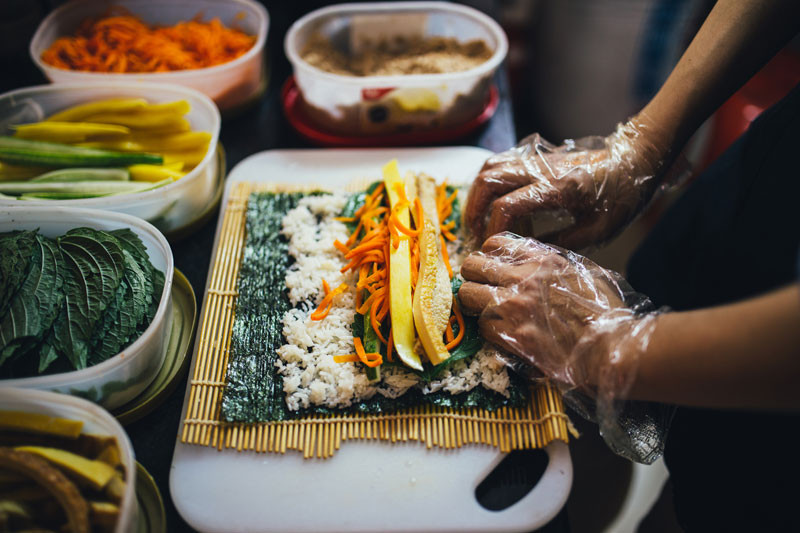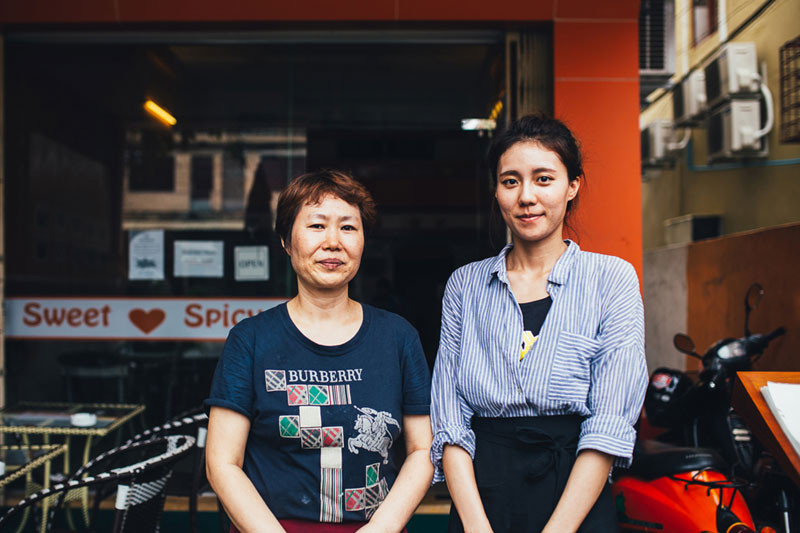The lunch rush had begun. In the kitchen, silver cafeteria trays were stacked with small dishes of homemade pickled vegetables, then sent out to a breezy dining area filled with Koreans, Western expatriates and a handful of sunburned tourists who had wandered in after visiting the nearby Tuol Sleng Genocide Museum.
An Hong-suk, the owner of Sweet and Spicy on Street 360, pointed to a large metal mixing bowl containing neat piles of lettuce, fried carrots, sprouts, daikon radishes, pickled pigweed and ginger-seasoned ground beef—all covered in sesame oil and seeds.

The colorful assemblage was bibimbap.
“In Korea, bibimbap is popular and traditional,” said the 50-year-old Ms. An, who with her mother and daughter opened the South Korean restaurant in February last year.
Ms. An, who was raised in South Korea’s mountainous North Chungcheong province, recalled when bibimbap was a sacred dish served only for Jesa, a Korean holiday that celebrates the deceased.
“A long time ago, when I was a child, we placed vegetables on the table for ancestors. After the memorial service, they were mixed together. Now bibimbap is very common in Korea,” she said.
“In Korea, we use a very big bowl and mix together to eat as a family.”
Ms. An’s 27-year-old daughter, Hwang Ji-na, plucked pickles from containers to fill another bibimbap order. The dish takes only a minute to arrange, but the three generations of Korean women spend hours each week making traditional Korean pickles from scratch by soaking vegetables in salt, washing them with vinegar, seasoning them and packing them tightly into storage containers.
Each meal at Sweet and Spicy is served with danmuji: pickled radishes dyed a stunning yellow with turmeric. Danmuji, like all traditional Korean pickles, do not need to be refrigerated, and the method was once used to preserve vegetables through South Korea’s cold winters.
Ms. An said making danmuji was a dying art form. “When I was young, many people make the radish. A long time ago, they did not have the refrigerator. These days, Koreans don’t make the radish. They just buy from the supermarket.”
Unlike manufactured Korean pickles, homemade danmuji keeps bacteria alive that are good for the immune system, Ms. Hwang said. “Many Koreans think this is good for health.”

Much like thali in India and Nepal, or Spanish tapas, a South Korean meal is comprised of many dishes with vastly different flavors including fishy, pickled, sweet and sour.
Kimchi—fermented, seasoned and aged cabbage—carries all of these flavors, and pulls the disparate essences together.
“Koreans all know how to make the kimchi. Kimchi is Koreans’ main food. I learned how to make kimchi when I was little girl,” Ms. An said, adding that every household makes kimchi slightly differently.
Sweet and Spicy has its own recipe, too.
“Family by family, it’s different. With the salt, we choose the good salt. Tiny salted shrimp—this one is the key. We use the tiny little shrimp and the salted squid,” Ms. An said.
“My mother buys a lot of salt and saves it for the year. Sea salt that is saved is better. We save it in storeroom without light,” she said, explaining that this makes the salt milder.
“When we save the salt, the vegetables are less salty. This is the secret.”
Ms. An, who worked in Japanese restaurants in South Korea since her early twenties, said she had always dreamed of sharing Korean cuisine with people from other cultures. She came to Cambodia for the first time eight years ago and returned many times before moving to Phnom Penh permanently 2 1/2 years ago.
“Korean food is awkward and unknown to many Cambodians, but I think they like it when they try it,” she said.




